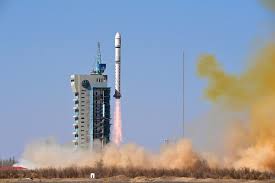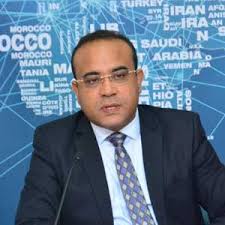The Italian historical-archaeological project of the catholic university in Sindh the site of Banbhore

Professor Dr Valeria Piacentini Fiorani
With these words, on 9th May, 2023, the Italian Minister for Foreign Affairs and International Cooperation, Antonio Tajani, has opened the works of the Day of Italian Cultural Missions in the World.
“I was there, honoured to speak at the closing session about the Italian Historical-Archaeological Project at Banbhore (Sindh) and our impact on the Territory.”
After nearly 20 years in Makran, the Italian Team reached Sindh, on the quest of the great Harbour-Towndepicted by textual sources of the Past as the key to Sindh and magnificent terminal of monsoon, river and land routes of the global trades between Orient and Occident, the Lands of the Zenjis [present Zanzibar] and Inner-Central Asia.

In collaboration with two Pakistani scholars, Dr A. Ibrahim and K. Lashari, we decided to face the challenging site of Banbhore. After five years of hard field work (2011-2015), we achieved the site’s first stratigraphic chronology. The majestic citadel, rising on a secondary branch of the Indus, powerfully bastioned, its 55 towers still standing in situ watching the river’s deltaic region and an imposing «Archaeological Park», could now be dated since the 4th Century b. CE c. until the early 13thCentury CE. The towers’ architectonic shape and other structural elements and archaeological dataallowed to perceive the main stages of its life: Seleucid-Parthian-Kushan until the 3rd Century CE: square, massive towers with an astounding drainage; U-shaped towers, typical of the Sasanian military architecture suggested a span of time 3rd-8th Century CE;round towers rebuilt on preceding defensive structures – typical of Islamic systems – pointed to the final phase of the site. End of the site’s peopling and abandonment? Only hypotheses and new archaeological and historical research-work.
At the end of 2017, field-work was resumed on the basis of a Memorandum of Understanding signed between the General Directorate of Antiquities and Archaeology-Ministry of Culture-Tourism-Antiquities and Archives of Sindh, and the Catholic University of the Sacred Heart of Milan, Italy.
In 2016,following archaeological and historical data,we had assumed that Banbhore’s site might be identified (90%) with the historic harbour-town of the pre-Islamic Dib/Islamic Daybul, heart of a territorial system. Not only this. In 2014-2015, while excavating Trench 9 in the central portion of the mound, on the topsoil levels we had come across a wealth of ivory off cuts and other artisanal items: unknown evidence of some craftmanship of luxury goods.
Thus, in 2017, we decided to focus on Trench 9 and the site’s central-western sector, never touched by F.A. Khan’s excavations, dismissed as «of no archaeological relevance… stones and rubbles mirroring the site’s decadence». Despite this assertive statement, now we can affirm that, undoubtedly, we are confronted with the site’s last phase of peopling, a stage, however, far from being «irrelevant», since what was coming to light was a prosperous artisanal quarter and market built on imposing buildings of the Past, skirting the main North-South/East-West road-axis of our mound. Decadence? Not at all: reorganisation of the urban plan.
Textual sources give detailed descriptions of suchintra-moeniamarkets all along the Arabian seaboards, but archaeological data are scanty. Here, in Daybul, we have the first plastic picture of a Middle-Age Islamic market with its workshops: ivory and metal-working, glass, ceramics, beads, semi-worked shells and other!
Archaeological and structural data point toa drastic reorganization of the site’s plan, peopling and life. Separated into two sectors by the so-called «Partition Wall», we are confronted with a new urban plan structured by a strong, authoritarian, centralised power; a plan that, at the same time, suggests a new political and institutional configuration. Eastwards, stood the Palatial area excavated by F.A. Khan, with its Great Mosque rebuilt on a Buddhist Temple, lavish palaces facing a lovely artificial lake at the foot of the north-eastern bastions. Westwards, on the relics of striking buildings, the Italian excavations were opening a quarter of workshops of luxury-goods and related artisans’ modest houses. These latter, of 2-3 small interconnecting rooms: walls in mud bricks on roughly squared stones and likely roofed, following a tradition still alive.Fragments of glass, ivory offcuts, beads and other were scattered around; the large ancient roads converted into handy pits for offcuts and refusals (organic and other). Pottery and objects still in situ associated with archaeological levels, and comparisons with pottery from other sites of the Indian Ocean gave a preciousmaterial evidence of a renewed prosperity and a large spectrum of resumed international relationships, trades and business. Why and how?
Excavations in textual sources (chronicles and travelogues in Arabic and Persian) provided precious information. Textual sources complement,frame the archaeological plastic picture and allow to give a raison d’être to this urban development. The disruption of Mansura Emirate (first decades of 11th Century CE) had left open the doors to heavy attacks by Turkish hordes. Daybul, besieged, held on and rebuilt itself: a safer new urban plan (luxury goods crafted inside the walls! Easier also to levy the due tolls), the palatial quarter in a safer position, and all around – extra-moenia – a reorganized«Industrial Quarter». When new Turkish peoples (the Seljuks) besieged once again the well-fortified citadel in the fifties of the 11th Century, they had the worst and came to pacts with the new leadership: Daybul became Autonomous Territory under a native Amir. The Territory included Makran. This was the new political-institutional organization that gave to our site new splendour and predominance thanks to a native leadership and personal overseas connections and matrimonial alliances. These latter, Mansura’s heritage.
Ministry and DGAA are involved, their formidable teams support and collaborate with us on the field. Training and Italian know-how is given to selected scholars. Workers are no less concerned. Tourists and schools come to visit our open-air Museum, properly preserved following local traditional «bio-restauration» systems. Local craftsmen are actively involved, while surrounding villages provide services and information about local crafts.
History – Archaeology – Science and Technologies have been closely working together both in Italy (archaeometric analyses) and in Sindh, on the field, for a common cultural heritage and a sustainable economic development of the territory, a presence and a joint activity that represent a precious cultural bridge between distant countries, as stated by the Italian President of the Republic in his Message to The Day of Italian Archaeology Abroad.





